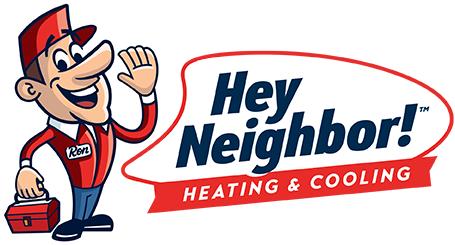It’s been a muggy and sweltering July in Northeast Ohio so far. Just when you think it can’t get any worse, you return to your home at the end of a long workday expecting a blast of frosty cold air, only to run smack into a wall of heat instead. Clearly, something’s wrong with your air conditioner, but you don’t know what. You’re overheated, tired, cranky – and desperate.
But wait – don’t make a snap decision that could cost you! Before you call one of our friendly expert techs out for a visit, it’s wise to make sure the issue isn’t something you can easily fix. Possibly the only thing worse than malfunctioning AC in the summertime is realizing that you scheduled a service call over something as obvious as a tripped breaker.
If your central air conditioning system is acting up this summer, work through each of these four simple steps before calling us.
Step 1: Check your thermostat.
If your air conditioner isn’t cooling when it should (or at all), check to see if the thermostat is working. Is it reading the room temperature accurately? Is it set to Cool and calling for cooling when it’s supposed to? Is the display visible? The fix could be as easy as swapping out dead batteries for some fresh, new ones. Along that line, it’s a smart plan to write a reminder on your calendar to replace your thermostat’s batteries annually. You’ll save yourself from potential thermostat-related headaches in the future.
Step 2: Check the breaker box.
Is your HVAC system getting power? Make sure the power switch on the indoor unit is on. Next, pay a visit to your breaker box and see if any circuit breakers are tripped. If you spot any, switch them off and then on again, and then wait 15 minutes to see if your unit starts. If a breaker trips again, call for service immediately, as this could indicate other, more severe problems.
Step 3: Check your system’s airflow.
If your AC seems to be operating normally but isn’t blowing enough cool air, it could be that something is preventing the proper flow of air through your system. Is your filter dirty? It should be changed frequently – as often as monthly if you have pets or if you smoke. Is anything blocking airflow to the outdoor condenser unit, such as debris or vegetation? Inspect the ductwork you can see to make sure it’s not kinked, damaged, or disconnected. If you discover a problem with your visible ductwork or suspect that the ductwork inside your walls has come apart or is broken, call us.
Step 4: Check your unit’s doors.
HVAC units built within the last 20 years or so have a safety switch feature that cuts power to the unit if its door panels aren’t closed. Check to make sure these are secure. You should be able to close a dislodged door with ease, but if not, give us a ring.
We definitely do want to make sure you’re calling for actual emergencies, not something you can fix on your own. If none of these easy fixes work, it’s time to call your friendly neighborhood HVAC experts – us! Our experts will quickly diagnose your AC problem and give you an honest, up-front estimate for repair or replacement. That’s how neighbors should treat neighbors!™


Comments are closed